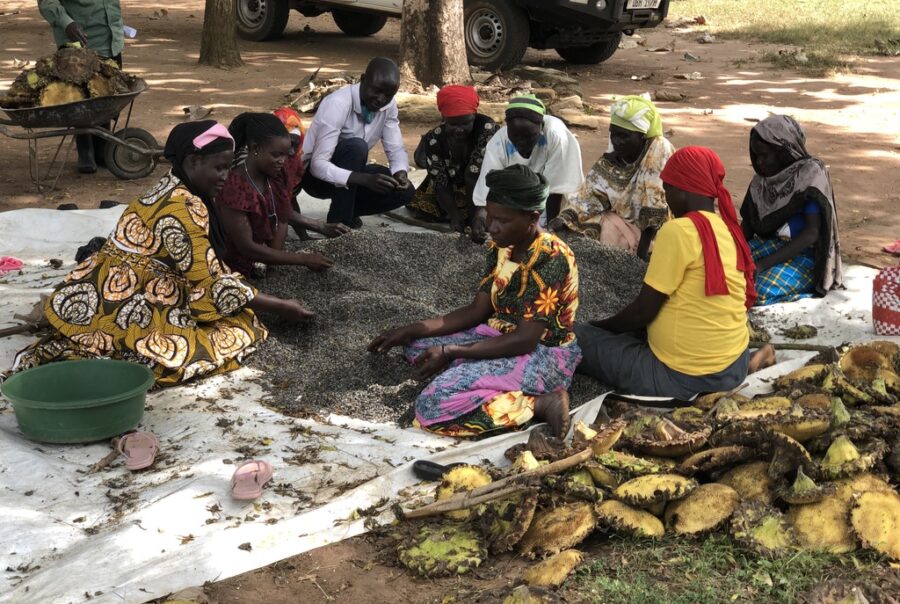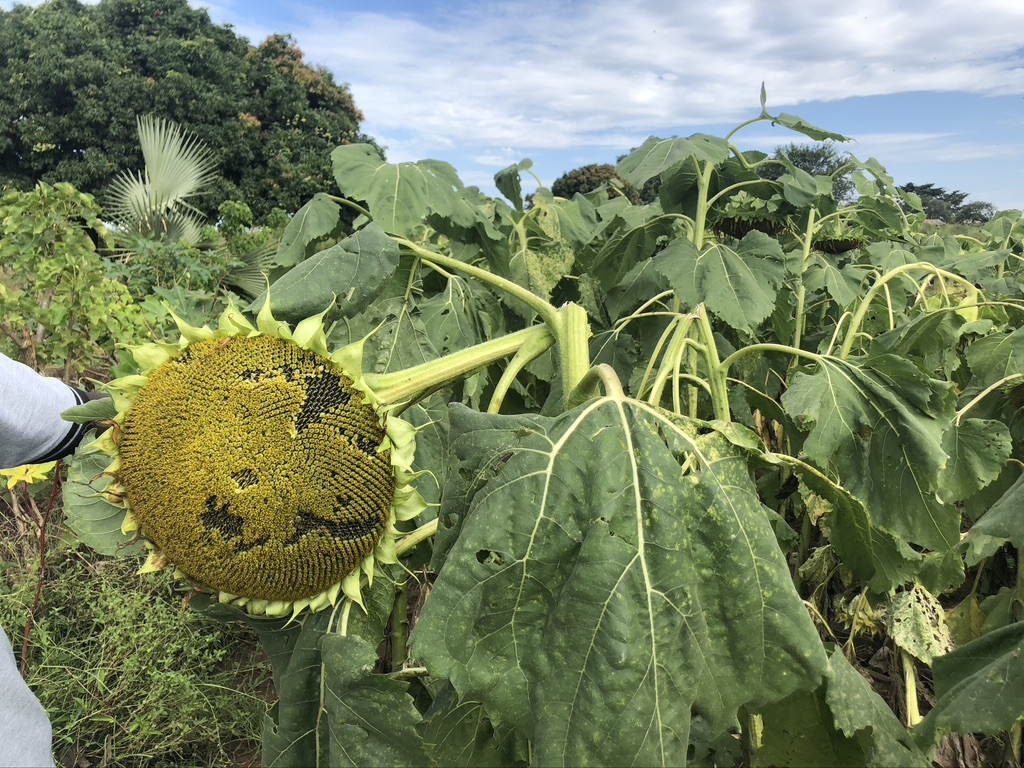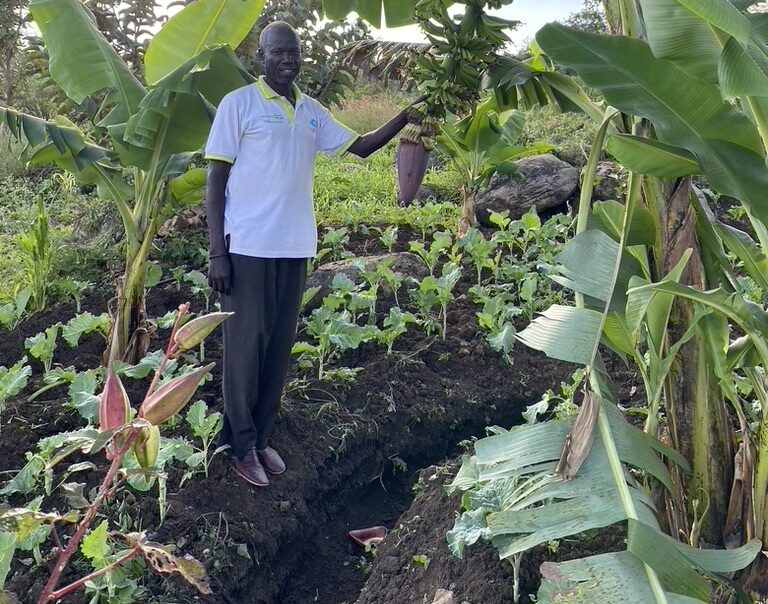Introduction
Climate change, caused mainly by the use of fossil fuels in industrialised countries poses a growing threat to smallholder farmers in Northern Uganda, reliant on rainfed agriculture. The impacts of climate change in this area include prolonged dry spells and increased temperatures resulting in water stress and reduced crop yields.
As I write, schools just across the border in neighboring South Sudan are closed, due to extreme heat (45 Celsius). The shifting onset of rains is also causing challenges to farmers, with unpredictable rainy seasons making it difficult to know when to plant crops.
Northern Uganda hosts over 1.7 million refugees mainly from South Sudan and Democratic Republic of Congo. And while there are stark contrasts between the lives of refugee and host communities, both depend on small-scale farming for food and income despite the effects of climate change and local environmental degradation.
The impacts of climate change combined with insecurity are starkly visible in the region. There is a stubbornly high incidence of poverty and undernutrition, with about a third of the population malnourished, compared to the national average of 2.4%. Stunting in children is still present, it not only affects children’s health, making them more susceptible to disease and infection, but also impairs their mental and physical development – meaning children who suffer from stunting are less likely to achieve their full height and cognitive potential as adults.
Many development initiatives have favoured agri-business led solutions to food insecurity, which involve the “productionist approach” that argues: as there are people starving and the world population is growing rapidly, so we must maximise production using all forms of modern technology. Agribusiness has played a dominant role in framing solutions based on the introduction of narrow ranges of input-responsive crops (maize, sunflower, groundnut varieties) along with the intensive applications of chemical fertilisers and pesticides.
However, this approach largely ignores the value and importance of relatively climate resilient and nutritious local crops and trees, such as sorghums and millets, local vegetables and multipurpose tree species on farms; in adapting to and mitigating against climate change. It also overlooks the dangers of environmental pollution linked with the excessive and often inefficient use of agrochemicals.

Photo: Women processing sunflower seeds
Vulnerability Factors
Climate change is affecting the livelihoods and income of smallholder farmers in Northern Uganda who largely rely solely on rain-fed agriculture.
Key vulnerability issues for smallholder farmers relating to climate change are:
- The shifting onset of rains and prolonged dry spells has led to false predictions over the start of the rainy seasons, resulting in lower yields, food shortages and increased food and planting material prices.
- Climate variability over the years has caused shifts in planting seasons, with some years experiencing only one rain season instead of two (such as 2020 and 2018).
- Repeated poor growing seasons discourage farmers from practicing agriculture. Some farmers, mostly men, abandon agriculture and some go into charcoal production and trade; which is a key driver of forest degradation and deforestation in the region.
- Crop failures, due to heat stress, hailstorms and/or floods create food shortages; which in turn lead to incidences of food theft from granaries and gardens.
- Increased clearance of wetlands, forest lands and grasslands to make way for farming.
- Environmental pollution, due to the misuse and overuse of chemical pesticides and fertilisers, contaminating wetlands and rivers used for drinking, irrigation and fishing.

Photo: Sunflowers damaged by hail
Potential Solutions and Adaptation Practices
-
- The adoption of a broader view of water management within Northern Uganda that extends beyond specific interventions to integrated water resource management, landscape approach that encourages the conservation of wetlands, woodlands and grasslands and an analysis of the competing issues for water for drinking, farming and industry.
-
- Increasing the resilience of rainfed agriculture, through the introduction of water harvesting systems, planting pits and small-scale irrigation is key. The full participation of grassroots-level farmers and water users is essential for the success of this approach.
-
- Water management needs to be addressed by providing support, advice and guidance to farmers and local governments on the importance of conserving wetlands for climate change adaptation and mitigation. It is equally important to raise awareness of the ecosystem services benefits wetlands provide: including clean drinking water, regulating and recharging groundwater, flood regulation and providing major habitats for birds, fish, molluscs and crustaceans.

Photo: Example of water ditches for water conservation
More can be done to support smallholder farmers through:
-
- The promotion of Climate Smart Agriculture (CSA) interventions, such as: Conservation Agriculture (minimum tillage and soil disturbance, permanent soil cover with crop residues, and crop rotation and intercropping).
-
- Encouraging the use of organic fertiliser and local, native nitrogen fixing agroforestry tree and crop species (such Faidherbia albida and pigeon peas (Cajanus cajan), organic pesticides (such as neem Azadirachta indica) and the efficient use of chemical fertilisers ( i.e. 4 Rs: Right source of nutrients, Right rate, Right time and Right place).
-
- Raising awareness on the human health and environmental hazards linked with chemical fertilisers and pesticides.
-
- Encouraging agroforestry: conserving and planting multipurpose trees and crops in pastures and arable fields, around homesteads and as boundary demarcation. Suggested species include: nitrogen fixing trees and shrubs, such as Faidherbia albida as well as multipurpose trees such as Shea (Vitellaria paradoxa) It’s also important to encourage livelihoods that complement the conservation of forest, grasslands and wetlands, such as beekeeping.
-
- Providing up-to-date, relevant agrometeorological information to smallholder farmers. This could be done through linking up with Uganda National Meteorological Authority, IGAD Climate Predictions and Applications Centre (ICPAC) and Greater Horn of Africa Climate Outlook Forums (GHACOF) which bring together climate scientists, meteorologists and experts from multiple sectors to evaluate potential impacts of the seasonal forecast and co-produce mitigation measures.
Ruth Malleson
Indepentent advisor & researcher for Resilience Constellation
